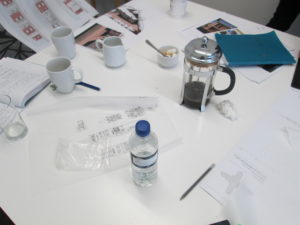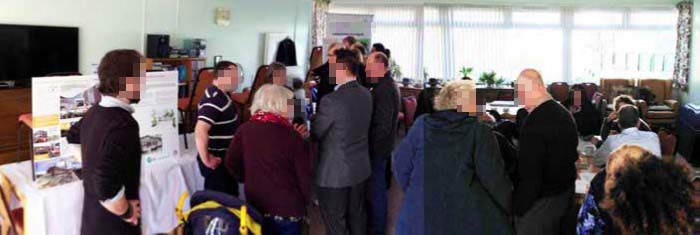Rethinking images of construction
Among some architects there is a perception that contractors are insufficently attentive to building users. However, the research observed many examples of contractors working positively with building users and the wider community: keeping building residents and/or neighbours regularly informed about the build; assisting an older resident when they had a fall; buying chocolates and flowers for neighbouring residents at the end of a project. On refurbishment projects some older residents enjoyed watching the build and chatting to the builders. On new builds, site managers are often still present when residents start moving into a building, and through talking to staff and residents, his awareness of dementia has increased:
Interviewer: As a contractor, is the end user of the building something that you think about?
Site manager: The answer’s yes, but if you asked me the same question 10 years ago I’d have said no. I’ve built enough care homes now to know what the end user requires, and a bit more knowledge of dementia levels. I think I have a different view altogether on dementia now than what I did have. Out of the last two care homes I’ve built, they’ve actually had residents in before we’ve left, so we have a bit of chat with them…
Can this sensitivity to building users become more widespread throughout construction? Some building contractors and project management companies are already developing strategies for this.
In our research we observed architects presenting designs in a range of settings.
Architectural student reviews
Designs are presented to students, tutors and practicing architects. The students present their building concept and describe the site context. Questions are asked about the ‘narrative’, ‘connection with the landscape’ and architectural precedents. Comments focus on the quality of the drawings and models; however, there is little discussion of technical issues, buildability, costs, or regulatory issues.
Public consultation
When presenting designs at public consultations, architects must deal with complex questions such as the impact of the construction process and finished building on neighbours, the experiences of building users, and regulatory requirements. Consultations can be informal and open, the architects walk with people along a series of design board, and use these to explain projects. Questions can range from queries about care provision to anxieties about car parking and the noise and traffic from vehicles on site.
Internal design reviews
Design reviews in architectural offices are performed in similar way to student reviews. Designs are reviewed by senior practice members, and there is a comparable use of language to explain the building ‘narrative’. However, in these reviews, the architect must also discuss how the design meets the requirements of the client, planners, regulators and building contractors.
Project meetings
 In project meetings with clients, developers and contractors, architects are often questioned about costs and buildability – issues that may be less prominent in student reviews. Project architects are challenged about the financial, regulatory and practical implications of their designs
In project meetings with clients, developers and contractors, architects are often questioned about costs and buildability – issues that may be less prominent in student reviews. Project architects are challenged about the financial, regulatory and practical implications of their designs

